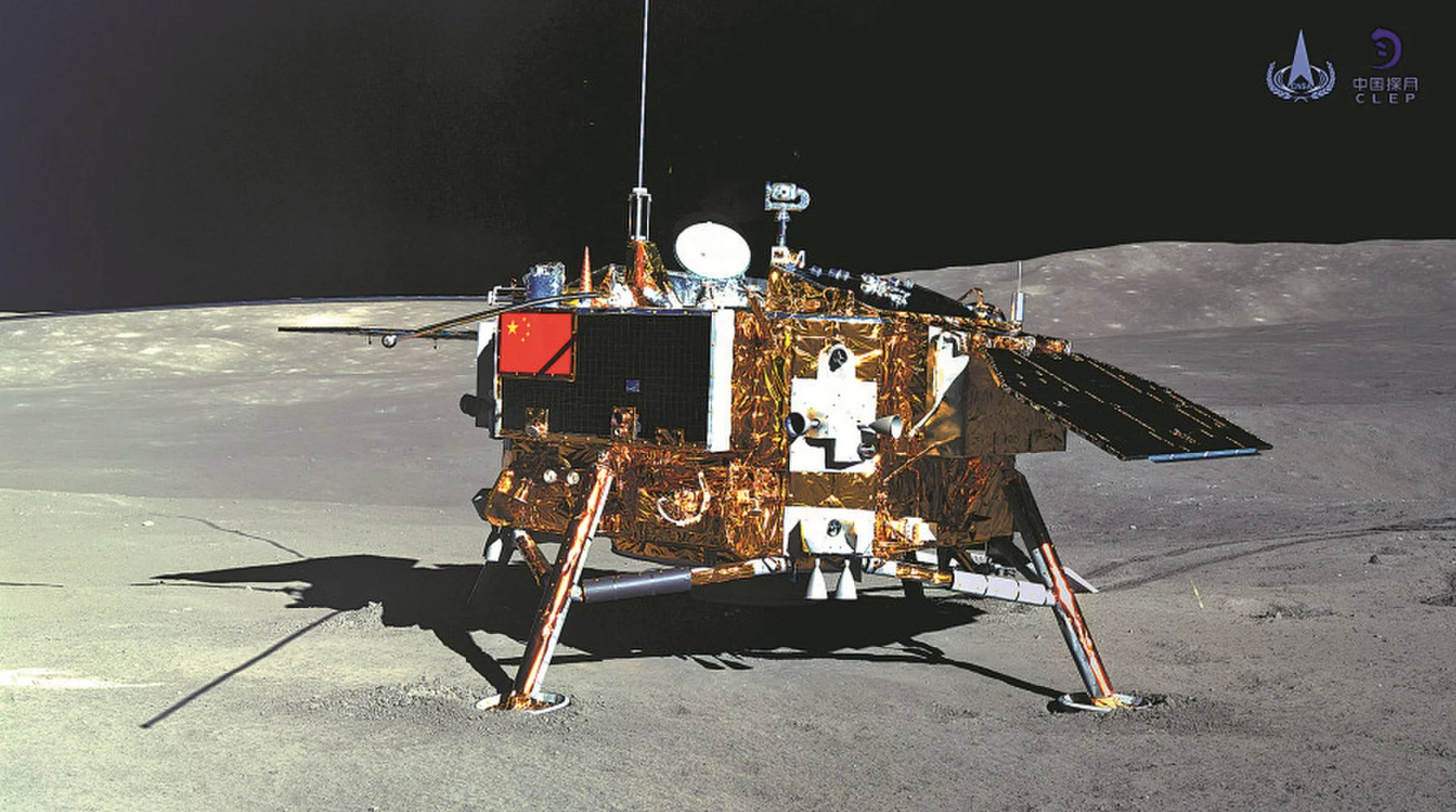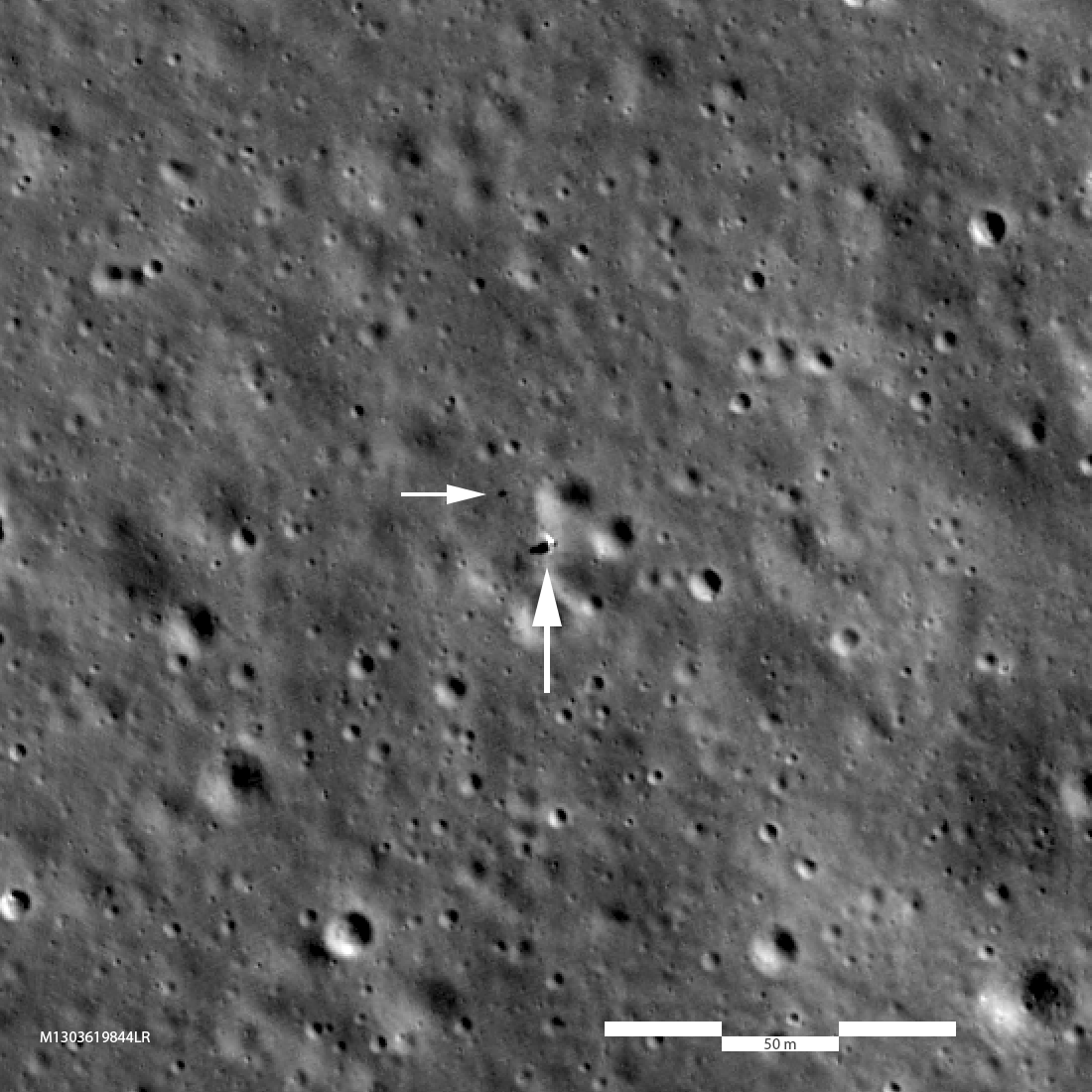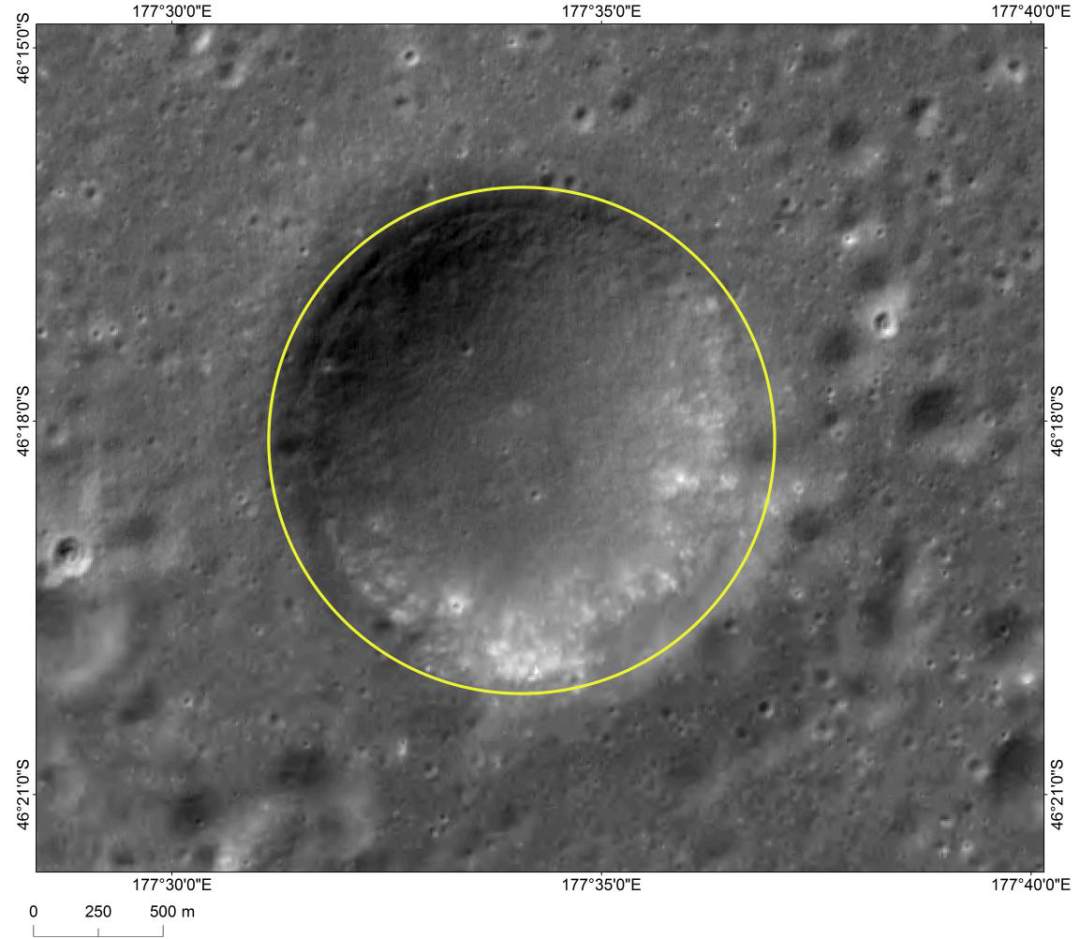NASA's lunar orbital probe made new images of the China Chang'e-4 station closer and clearer
On February 15, 2019, NASA showed new photographs from the Moon’s orbit taken by the LRX probe of the Chang'e-4 descent vehicle and the Yuyut-2 rover.

The first attempt to photograph the Chang'e-4 modules on the far side of the Moon from a distance of 330 km is described here .
The first photo of the LRO probe from January 30, 2019 was this: The

lunar orbital probe (LRO) launched by NASA on June 18, 2009 continues to be used to obtain a large amount of valuable scientific information and on February 1, 2019 managed to pass almost over the landing site of Chang'e-4 "Statio Tianhe".
A new photo in the maximum resolution (TIF format, 512MB) can be downloaded from here.
The photo was taken with an LRO probe from a height of 82 kilometers, a resolution of 0.85 meters (33 inches) per 1 pixel, which made it possible to get a clearer picture of the location of the Chang'e-4 module and, finally, see the contours of the Yuytu-2 rover in several pixels ".

To understand the dimensions in the photo, the data on the Chang'e-4 modules:
- the Chang'e-4 descent module (4.4 meters between the opposite landing legs, weight 1200 kg.);

- Yuytu-2 rover (height 1 meter, width 1 meter (without solar batteries), 1.5 meters in length, two folding solar panels, six wheels, weight 140 kg.).

During the LRO probe, the Yuuta-2 rover was located 29 meters north-west of the Chang'e-4 landing gear. Now he is still further, as he drove more than 120 meters from the beginning of the mission.

At the moment, this photo from orbit is made with almost the maximum possible resolution (in pixels per meter) of the LROC camera of the LRO probe, however, NASA plans to continue to receive new photos of the landing site of the Chang'e-4 and the Yuuta-2 rover with different lighting and track the movement of the rover "Yuytu-2".
For comparison, the photo of the Chang'e-3 modules made by the LRO (the resolution there was 1.6 meters per 1 pixel due to the higher orbit of the probe), which is two times less than in the new photo of Chang'e-4. Although the size of the modules of the missions "Chang'e-3" and "Chang'e-4" are almost the same.

Meanwhile , five new names appeared on the back of the Moon (although it seems to me that this event and the LRO photo are interconnected) ...
According to astronomical news of February 15, 201, -The Academy of Sciences of China and the International Astronomical Union, the landing site Chang'e-4 was called “Statio Tianhe” (天河) - the milky way, and gave their names to four large formations inside the crater Karman - Mons Tai '() - the central peak (after the mountain Tai in Shandong province, the first of the five sacred mountains in China) and craters (织女 , 天津 , 河鼓) - “Girl-Weaver”, “Hegu” and “Tianjin” (in honor of the fairy who accompanied the Shepherd and Girl-Weaver in ancient Chinese myths and legends).









The International Astronomical Union (International Astronomical Union - IAU) confirmed this name officially .

The first attempt to photograph the Chang'e-4 modules on the far side of the Moon from a distance of 330 km is described here .
The first photo of the LRO probe from January 30, 2019 was this: The

lunar orbital probe (LRO) launched by NASA on June 18, 2009 continues to be used to obtain a large amount of valuable scientific information and on February 1, 2019 managed to pass almost over the landing site of Chang'e-4 "Statio Tianhe".
A new photo in the maximum resolution (TIF format, 512MB) can be downloaded from here.
The photo was taken with an LRO probe from a height of 82 kilometers, a resolution of 0.85 meters (33 inches) per 1 pixel, which made it possible to get a clearer picture of the location of the Chang'e-4 module and, finally, see the contours of the Yuytu-2 rover in several pixels ".

To understand the dimensions in the photo, the data on the Chang'e-4 modules:
- the Chang'e-4 descent module (4.4 meters between the opposite landing legs, weight 1200 kg.);

- Yuytu-2 rover (height 1 meter, width 1 meter (without solar batteries), 1.5 meters in length, two folding solar panels, six wheels, weight 140 kg.).

During the LRO probe, the Yuuta-2 rover was located 29 meters north-west of the Chang'e-4 landing gear. Now he is still further, as he drove more than 120 meters from the beginning of the mission.

At the moment, this photo from orbit is made with almost the maximum possible resolution (in pixels per meter) of the LROC camera of the LRO probe, however, NASA plans to continue to receive new photos of the landing site of the Chang'e-4 and the Yuuta-2 rover with different lighting and track the movement of the rover "Yuytu-2".
For comparison, the photo of the Chang'e-3 modules made by the LRO (the resolution there was 1.6 meters per 1 pixel due to the higher orbit of the probe), which is two times less than in the new photo of Chang'e-4. Although the size of the modules of the missions "Chang'e-3" and "Chang'e-4" are almost the same.

Meanwhile , five new names appeared on the back of the Moon (although it seems to me that this event and the LRO photo are interconnected) ...
According to astronomical news of February 15, 201, -The Academy of Sciences of China and the International Astronomical Union, the landing site Chang'e-4 was called “Statio Tianhe” (天河) - the milky way, and gave their names to four large formations inside the crater Karman - Mons Tai '() - the central peak (after the mountain Tai in Shandong province, the first of the five sacred mountains in China) and craters (织女 , 天津 , 河鼓) - “Girl-Weaver”, “Hegu” and “Tianjin” (in honor of the fairy who accompanied the Shepherd and Girl-Weaver in ancient Chinese myths and legends).









The International Astronomical Union (International Astronomical Union - IAU) confirmed this name officially .
